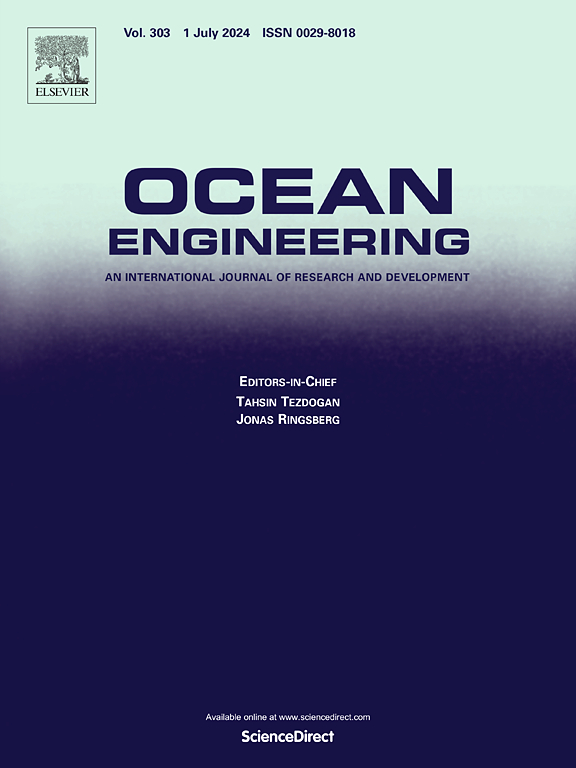Verification and validation of hard-chine hull performance in calm water: Effects of numerical setups and hull configurations
IF 4.6
2区 工程技术
Q1 ENGINEERING, CIVIL
引用次数: 0
Abstract
Recent studies show that the numerical estimations of resistance of planing hulls differ from experimental results by 10 %–20 %, mainly due to the absence of a towing force in the conventional 2DOF numerical model and the geometric differences between the 3D model in the simulations and the physical model in experiments.
This study investigates the effect of a towing force on the performance of a conventional 2DOF setup with overset grid, and compares it with a 3DOF setup, typically used for manoeuvring simulations. Additionally, different wall treatment approaches (y+ < 5 and y+ > 30) are compared. Verification and validation analysis is conducted for the bare hull and the validated numerical models are used to compare hulls equipped with spray rails, chine strips and V-shaped spray interceptors.
Models directly solving the viscous sub-layer (y+ < 5) were invalidated since their comparison errors in running position and resistance exceeded the validation uncertainty. Conversely, numerical models employing wall functions for wall treatment (y+ > 30) accurately predicted both the running position and the resistance of the bare hull within the validation uncertainty. Introducing a towing force in the 2DOF model improved the prediction of the running position, while the 3DOF setup demonstrated better overall accuracy.
求助全文
约1分钟内获得全文
求助全文
来源期刊

Ocean Engineering
工程技术-工程:大洋
CiteScore
7.30
自引率
34.00%
发文量
2379
审稿时长
8.1 months
期刊介绍:
Ocean Engineering provides a medium for the publication of original research and development work in the field of ocean engineering. Ocean Engineering seeks papers in the following topics.
 求助内容:
求助内容: 应助结果提醒方式:
应助结果提醒方式:


